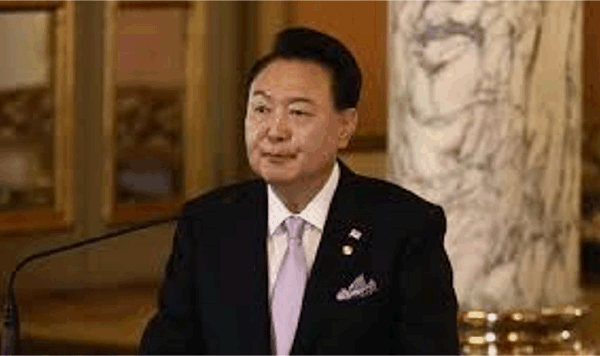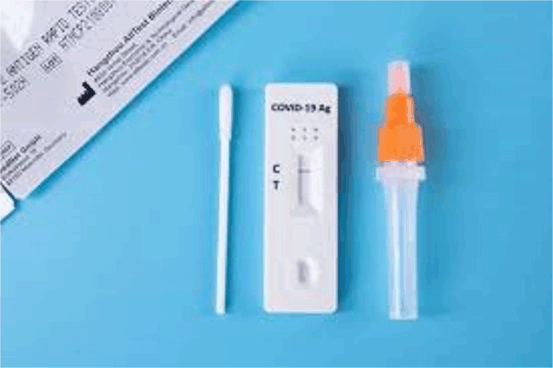보잉 스타라이너(Boeing Starliner)의 지구 귀환 연기, 우주 비행사의 귀국 날짜는 정해지지 않음
게시됨 2024년 6월 22일 토요일 오후 12시 05분 2024년 6월 22일 토요일 오후 12시 5분, 업데이트됨 2024년 6월 22일 토요일 오후 12시 20분 2024년 6월 22일 토요일 오후 12시 20분
보잉 스타라이너 캡슐이 2022년 시험비행 중 국제우주정거장에 접근하고 있다.(제공:NASA)
abc.net.au/news/boeing-starliner-technical-problems-international-space-station/104010890링크 복사
링크 복사됨기사 공유
간단히 말해서, 국제 우주 정거장에서 보잉 스타라이너 우주 캡슐의 귀환이 기술적인 문제로 인해 지연되었습니다.
Starliner 프로그램은 여러 번의 출시 지연을 포함하여 기술적 어려움에 시달렸습니다. 새로운 귀국 날짜가 설정되지 않았습니다.
무엇 향후 계획?NASA 관계자는 Starliner가 6시간 동안의 왕복 여행을 시작하기 전에 문제의 원인을 더 잘 이해하고 싶다고 말했습니다.
NASA는 기술적 문제를 검토하는 데 더 많은 시간을 할애하기 위해 첫 번째 우주비행사와 함께 국제 우주 정거장에서 보잉의 스타라이너 우주 캡슐의 지구 복귀를 연기했습니다.
두 사람의 복귀는 당초 6월 26일로 예정됐으나 이미 6월 14일로 한 차례 연기됐다.
NASA는 새로운 날짜를 제공하지 않아 임무에 참여한 두 명의 우주비행사가 언제 돌아올지에 대한 의문을 제기했습니다.
기관은 성명을 통해 “임무 관리자들은 6월 24일과 7월 2일에 예정된 두 차례의 우주 유영 이후 향후 복귀 기회를 평가하고 있다”고 밝혔다.
미국인인 Barry “Butch” Wilmore와 Sunita “Suni” Williams는 NASA로부터 정기 비행 인증을 받기 위한 최종 시연으로 6월 5일에 이륙했습니다.
지난 5월 NASA 케네디 우주센터의 우주비행사 부치 윌모어와 수니 윌리엄스.(로이터: 조 스키퍼)
NASA의 상업 승무원 프로그램 관리자인 Steve Stich는 “우리는 시간을 들여 표준 임무 관리 팀 프로세스를 따르고 있습니다.”라고 말했습니다.
Stich는 “스타라이너는 우주정거장에 도킹된 동안 궤도에서 잘 작동하고 있다”며 “추가 시간이 있으면 향후 임무를 위한 시스템 업그레이드에 대한 “귀중한 통찰력”을 얻을 수 있을 것이라고 덧붙였습니다.
2019년부터 사람이 탑승하지 않은 채 두 차례 우주로 시험 비행된 우주선의 승무원 테스트에서는 28개의 조종 추진기에서 5번의 실패, 이러한 추진기를 가압하기 위한 5번의 헬륨 누출, 느리게 움직이는 추진제 밸브를 경험했습니다. 이는 과거의 해결되지 않은 문제를 나타냅니다.
NASA와 Boeing이 수행해야 했던 문제와 추가 테스트는 Starliner가 정확히 언제 승무원을 집으로 데려갈 수 있는지 의문을 제기하고 Boeing이 Starliner 프로그램에 직면한 더 광범위한 문제 목록에 추가합니다.
회사는 45억 달러(67억 달러)의 NASA 개발 계약 외에도 비용 초과로 15억 달러(22억 달러)를 지출했습니다.
NASA는 스타라이너가 2020년부터 NASA의 주요 우주선이었던 SpaceX의 Crew Dragon과 함께 국제 우주 정거장(ISS)을 오가는 우주 비행사를 수송할 수 있는 두 번째 미국 우주선이 되기를 원합니다.
보잉의 스타라이너(Starliner)가 6월 5일 플로리다주 케이프 커내버럴 우주군 기지에서 발사되고 있다.
어려움에 처한 스타라이너 프로그램
보잉의 스타라이너 프로그램은 오랫동안 소프트웨어 결함, 설계 문제, 하청업체 분쟁으로 어려움을 겪어왔습니다.
승무원이 탑승한 비행의 발사는 다양한 문제로 인해 2년 동안 지연되었으며, 한때 기술적인 어려움으로 인해 발사 24시간 전에 연기가 발생했습니다.
Starliner 출시는 기술 문제로 인해 오랜 지연에 직면
보잉은 15억 달러 이상의 비용 초과로 수년이 지연된 프로그램인 Starliner 벤처를 위한 공간 확보가 절실히 필요합니다.
더 읽어보세요
스타라이너가 6월 6일 도킹을 위해 우주정거장 근처에 도착했을 때, 5개의 추진기 고장으로 인해 보잉이 문제를 해결할 때까지 우주선이 근접 접근을 할 수 없었습니다.
회사는 소프트웨어를 다시 작성하고 일부 절차를 수정해 4개를 부활시킨 뒤 도킹을 진행했다.
Starliner의 도킹 해제 및 지구로의 복귀는 우주선의 테스트 임무 중 가장 복잡한 단계를 나타냅니다.
NASA 관계자는 Starliner가 약 6시간 동안의 왕복 여행을 시작하기 전에 ISS로의 여행에서 발생한 추진기 고장, 밸브 문제 및 헬륨 누출의 원인을 더 잘 이해하고 싶다고 말했습니다.
현재 스러스터는 하나만 죽었으나 보잉은 2022년 캡슐이 우주에서 무인으로 귀환하는 동안 4개의 스러스터 문제에 직면했습니다.
Boeing과 NASA가 공동으로 제정한 비행 규칙에 따르면 Starliner의 조종 추진기는 최소한 “6 자유도 제어”를 허용해야 하며 각각에는 하나의 백업 추진기가 있습니다.
이는 안전한 비행을 위해 28개의 스러스터 중 최소 12개(대부분 백업용)가 필요하다는 의미일 수 있습니다.
그러나 나머지 추진기가 각각 하나의 백업을 갖고 Starliner의 우주 이동 자유를 제한하지 않는 방식으로 함께 작동할 수 있는 한 더 적은 수의 추진기로 비행을 수행할 수 있습니다.
로이터
게시일: 2024년 6월 22일, 2024년 6월, 업데이트: 2024년 6월 22일
Boeing Starliner’s return to Earth postponed, with no new date set for astronauts’ flight home
Posted Sat 22 Jun 2024 at 12:05pmSaturday 22 Jun 2024 at 12:05pm, updated Sat 22 Jun 2024 at 12:20pmSaturday 22 Jun 2024 at 12:20pm
abc.net.au/news/boeing-starliner-technical-problems-international-space-station/104010890Copy link
Link copiedShare article
- In short: The Boeing Starliner space capsule’s return from the International Space Station has been delayed due to technical problems.
- The Starliner program has been plagued by technical difficulties, including multiple launch delays. No new return date has been set.
- What’s next? NASA officials say they want to better understand the cause of the problems before Starliner embarks on its six-hour return journey.
NASA has postponed the return to Earth of Boeing’s Starliner space capsule from the International Space Station with its first crew of astronauts to allow more time for a review of technical problems.
The pair’s return was previously scheduled for June 26, having already been postponed once before from June 14.
NASA did not provide a new date, raising questions about when the mission’s two astronauts will return.
“Mission managers are evaluating future return opportunities following the station’s two planned spacewalks on June 24 and July 2,” the agency said in a statement.
Barry “Butch” Wilmore and Sunita “Suni” Williams, both Americans, lifted off on June 5 as a final demonstration to obtain routine flight certification from NASA.
“We are taking our time and following our standard mission management team process,” said Steve Stich, NASA’s commercial crew program manager.
“Starliner is performing well in orbit while docked to the space station,” Mr Stich said, adding that the additional time would yield “valuable insight” into system upgrades for future missions.
The crewed test of the spacecraft, which has been test-flown to space twice since 2019 without humans on board, has experienced five failures of its 28 manoeuvring thrusters, five leaks of helium meant to pressurise those thrusters, and a slow-moving propellant valve that signalled unfixed issues from the past.
The issues and the additional tests NASA and Boeing have had to do call into question when exactly Starliner will be able to fly its crew home, and add to a list of broader problems Boeing faces with its Starliner program.
The company has spent $US1.5 billion ($2.2 billion) in cost overruns, on top of its $4.5 billion ($6.7 billion) NASA development contract.
NASA wants Starliner to become the second US spacecraft capable of ferrying its astronauts to and from the International Space Station (ISS) alongside SpaceX’s Crew Dragon, which has been the agency’s primary ride since 2020.
Starliner program plagued by difficulties
Boeing’s Starliner program has long struggled with software glitches, design problems and subcontractor disputes.
The launch of the crewed flight was delayed for two years due to a variety of issues, with technical difficulties at one point causing a postponement just 24 hours before launch.
Starliner launch faces lengthy delays due to tech issues
When Starliner arrived in the space station’s vicinity to dock on June 6, the five thruster failures prohibited the spacecraft from making a close approach until Boeing could implement a fix.
The company rewrote software and tweaked some procedures to revive four of them, and proceeded with a docking.
Starliner’s undocking and return to Earth represent the spacecraft’s most complicated phases of its test mission.
NASA officials say they want to better understand the cause of the thruster failures, valve issue and helium leaks that occurred on the trip to the ISS before Starliner embarks on its roughly six-hour return journey.
While just one thruster is currently dead, Boeing encountered four thruster problems during the capsule’s uncrewed return from space in 2022.
According to flight rules established jointly by Boeing and NASA, Starliner’s manoeuvring thrusters must, at a minimum, allow for “6 degrees of freedom of control”, and each has one backup thruster.
That could mean at least 12 of the 28 thrusters — most of which are backups — are required for a safe flight.
However, the flight could potentially be undertaken with fewer thrusters, as long as the remaining thrusters each have one backup and can work together in a way that does not restrict Starliner’s freedom of movement in space.
Reuters
Posted 22 Jun 202422 Jun 2024, updated 22 Jun 2024










